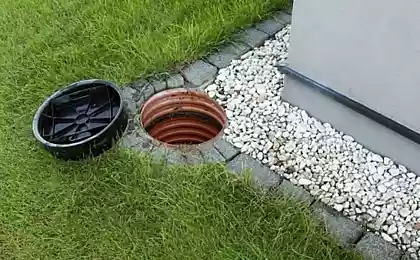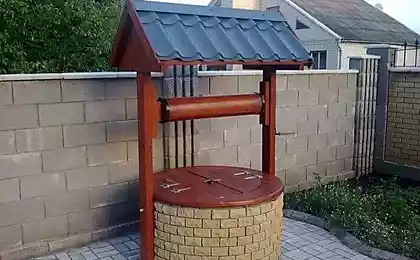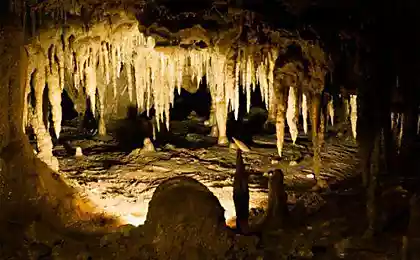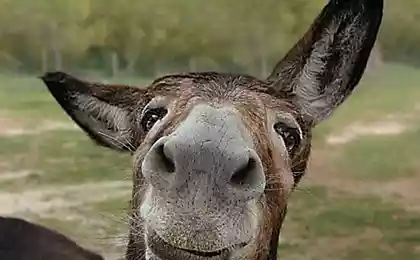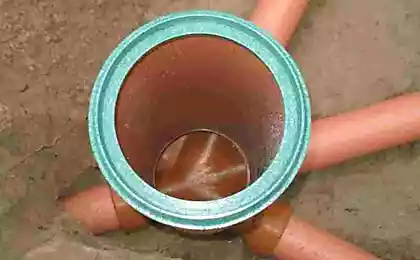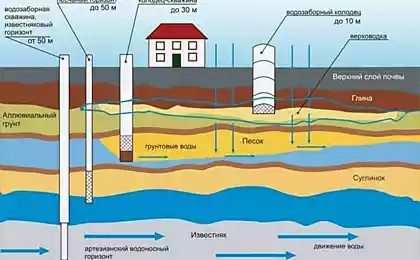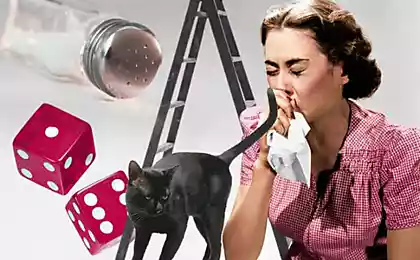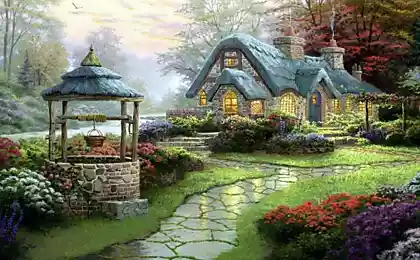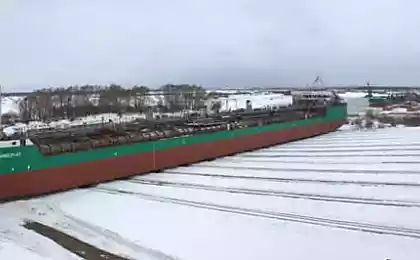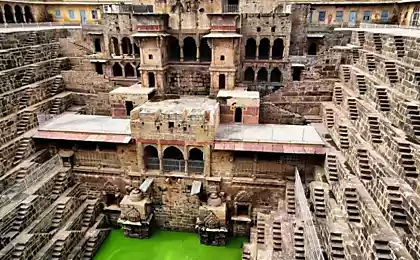644
The construction of the well, the signs by which you can find water
Leon-Baptiste Alberti in "the Ten books on architecture", published in 1485, he described the signs by which you can find water:
"The well provides water only when digging it reaches the level of the river. In the mountain town of Etruria, to walk to the water veins, had to go down to two hundred feet (60 m). Water found when he reached the level of the keys cascading in other places the slope of the mountain. If a place is by nature lumpy or is that beneath it is supposed emptiness, that it consider, as a vessel for the water. Where the strong the sun, draining its rays moisture, there is little or no water. If it still occurs in the fields, it is heavy, thick and salty. The water quickly occurs on the Northern slopes of mountains and where the shadow is very thick. Mountains which for a long time covered with snow, abundance of water. In this case, if the top level lawn, the water is almost always... Springs break where under them and around them the soil is solid and tight, and above them or level place, or they are covered with loose soil. More dense land delivers less water and only at the top and loose provides more water, but only in depth.
If the legs easily go into the ground and yet the ground to the feet sticks, it is an indication that there is water. There are more direct indications of the presence of water. This plant, loving the water: willow, reed, cane, ivy... of the earth, which produces grape trees with dense foliage, on which are found predominantly elderberry, clover, and wild plum, the soil is good and water is delicious. Also an abundance of frogs, earthworms, gnats and small winged insects, flying in large flocks, indicates the presence of water.
Accumulation of water should be sought where the lines of different layers. The most appropriate place for this is where mountain formations in contact with each other, form a kind of recess. It is established that the layers varied in relation to absorption and transpiration of.
So the red rocks almost always contain water, however, often deceptive, because the water goes in the cracks. Any siliceous stone... that is at the foot of mount natrecor and not smooth, easily exudes water. Fine sand gives abundant water with a bad taste, as opposed to large sand. The opposite happens with clay: dense — water does not, and does not pass coming from the outside... From the clay pot of water exudes a subtle but more fresh than others...
A number of techniques find the shallow water... Under clear skies at dawn lie down and her chin lean on the ground. Look me over look the surrounding countryside, and where you see the rising and swirling in the air couples, such as those in the freezing winter steam people water. To be sure, dig a hole the depth and width of four cubits (1.8 m). It put in the sunset brick, recently removed from the oven or a piece of raw wool, or unfired clay pot or a smooth copper vessel, tilted or oiled, close up the pit with boards and cover the holes with earth.
If the next day early in the morning you will see that the bricks have put on a little weight if the wool got wet, if a clay pot is softened, if the vessel is covered with drops... or if the land here will smoke from the fire... here is water... I like to search terms of the year: in the dry areas — spring, shady in the fall."
The atmospheric water penetrates through permeable soils at different depths until it reaches a confining horizon, consisting of a thick layer of dense fat clay deposits. Depending on the shape of the confining horizon water accumulates in a small or large volume, forming an aquifer with a mixture of sand, earth, clay, gravel. The number of aquifers to one and the same place depends on the structure of the earth or soil.
Aquifers are at various depths from the surface of the earth and to get the water, constructing wells. We have said that depending on the depth to ground water: the Bank — lies at a depth of 4 m; the soil lies at a depth of 10 m; soil — lies at a depth of 40 m; artesian — lies at a depth of 40 meters.
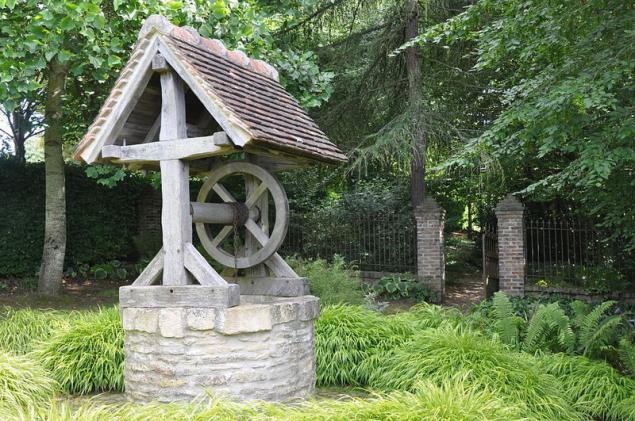
THE CONSTRUCTION OF THE WELL
Well — vital structure on the site, even if the plot has a centralized water supply system. What will the well depends on the depth of the aquifer, it may be a shaft or tubular.
Build wells away from the yard toilets, rubbish pits, outbuildings. The distance between them and the well should be at least 30-50 meters. To use water from any well can after the bodies sanepidemnadzora analysis of bacterial and chemical contamination. Build wells at the highest point of land. Installation of wells begin with finding water under the ground, workpiece material, tool. The best time for digging wells — the end of August, when the level of standing groundwater is the lowest.
Types of wells.
There are several types of wells, particularly:
ascending key wells;
descending key wells;
drilled wells (wood, concrete, brick, stone);
tube wells;
drilling or tubular wells.
The materials for the construction of wells.
As materials for the device wells used:
Tools.
Given that the construction of wells requires such work, such as marking, excavation, stone, carpentry and joinery, respectively, for their execution is necessary and suitable tool, manual or powered, including: crowbars, picks, scalopini, shovels, excavators, bulldozers, graders, probes, axes, saws, planes, chisels, wooden hammers, tripod, horizontal gates or vertical gates (cabestan), drilling spoons, coils, jelonki.
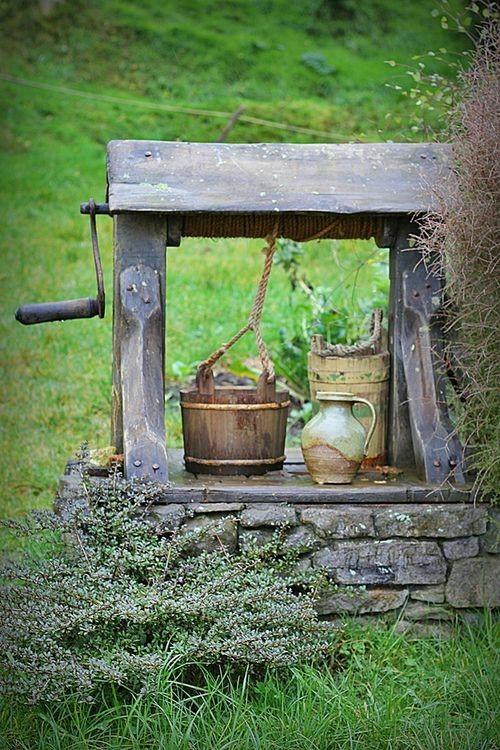
Construction ascending key wells.
Construction ascending key wells includes:
The construction of the descending key wells.
During the construction of the descending key wells in addition to site selection, clearing, construction of the reservoir in the reservoir and the bottom of wood, concrete, brick or stone. In order for the water clean in the tank the sump, in which water settles; from the sump the water is poured in the second part of the tank. These two parts of the tank are separated from each other by a partition. It can be made of any material, but you need to put across the movement of water. In many cases, the tank is not even needed. The aquifer can dig in a pipe through which water comes out.
The construction of groundwater wells.
Mine build wells in the shallow aquifer up to 20 m using conventional tools and means at hand. Depending on the materials used for the barrel, drilled wells may include: wood; concrete; brick; stone.
Drilled wells consist of a head, trunk, water-intake part of the sump.
The tip — surface portion, protects well from dust, snow, rain; in winter, the cap protects the well from frost and ice. The top cap needs to be cover. The barrel — mine the entire depth of the well.
To the pit walls do not crumble, they strengthen the wood walls (log cabins). Intake part — the lower part of the trunk where collected and stored water (depth of water intake part from 0.75 to 2 meters). Runs from the most durable material. The sump — lower part of the trunk. Designed to collect the required amount of water is insufficient when it enters into the well.
Wooden shaft wells is widespread, because there is always a material. Begin construction of the well with the Assembly of the frame, then make the layout of the mine and clay castle. Size frame mine well depends on the depth of the well (if it logs, then d = 12-18 cm, plate thickness of 10-15 cm). For the bottom of the frame use the following wood species: oak, elm, alder. For topside use wood of pine. Blockhouses perform "in a paw" and "the corner." During Assembly of the frame is checked with a plumb vertical position. Wooden frame consists from individual crowns.
Each aisle is numbered, the number of crowns depends on the depth of the well, the thickness of the logs, beams, width of the plate. It is impossible to caulk the cracks in the crowns of insulating materials (they quickly rot and spoil the water quality). When the frame is assembled, remove the soil to a depth of 1.5-2 meters, down there assembled the frame, install a gate or a tripod with a pulley and make waterproof the castle of compacted crushed clay, width and depth of 1 meter.
Mine keep digging, choosing uniformly from all sides of the ground to the thickness of the crown and, summing the logs of the new crowns, strengthening them together with temporary braces. To avoid distortion and rupture of the walls of the well, after 5-6 crowns placed mortgages logs 20-25 cm longer than ordinary. The ends are placed in the pit walls.
If the aquifer is abundant, it is difficult to have lower underwater part of the framework. In this case the well is lowered the carton, knocked out of thick boards, and continue digging, and bury the box for more opportunities. The bottom is filled with coarse sand, gravel, small pebbles with a layer of 20-25 cm to vspuchivanija Il when using the well.
Manholes of brick — the thickness of the brick walls of the wells from 25 to 37 cm, depending on the depth of the well. Dig a pit under the well, diameter of 1 meter, the bottom leveled. Prepare 3 round frames. The main — lower, 2-e other — intermediate and upper. Main frame is made of reinforced concrete, outer diameter is 5 cm more than the intermediate and has a steel knife to shape frame, reinforced from the outside. This is the most durable and heavy frame, with thickness up to 10 cm, a width of 25 cm and more.
The tube wells.
Occurrence of water-bearing rocks at depths greater than 20 meters it is expedient to arrange the tube-wells by drilling, with subsequent lowering in wells drilled steel pipes of different diameters. For the construction of tube wells need pipes and special drilling tools. Tube wells require less time and 5-6 times cheaper than mine.
Instruments for drilling: drilling spoon to drill wells at a steady light species. Usually use a spoon with a razor blade and a coil; the coil is used for drilling in clays and loams; chisels — used for percussion drilling (can be flat, chipping, pyramidal, etc.); jelonki — are used to extract from wells drilled rocks; rod — to secure the tool to perform drilling (length from 1.1-5.2 m); Shoe gear for rotary drilling of firm breeds.published on
Source: belbud.biz/stati_sovety/892/back.html
"The well provides water only when digging it reaches the level of the river. In the mountain town of Etruria, to walk to the water veins, had to go down to two hundred feet (60 m). Water found when he reached the level of the keys cascading in other places the slope of the mountain. If a place is by nature lumpy or is that beneath it is supposed emptiness, that it consider, as a vessel for the water. Where the strong the sun, draining its rays moisture, there is little or no water. If it still occurs in the fields, it is heavy, thick and salty. The water quickly occurs on the Northern slopes of mountains and where the shadow is very thick. Mountains which for a long time covered with snow, abundance of water. In this case, if the top level lawn, the water is almost always... Springs break where under them and around them the soil is solid and tight, and above them or level place, or they are covered with loose soil. More dense land delivers less water and only at the top and loose provides more water, but only in depth.
If the legs easily go into the ground and yet the ground to the feet sticks, it is an indication that there is water. There are more direct indications of the presence of water. This plant, loving the water: willow, reed, cane, ivy... of the earth, which produces grape trees with dense foliage, on which are found predominantly elderberry, clover, and wild plum, the soil is good and water is delicious. Also an abundance of frogs, earthworms, gnats and small winged insects, flying in large flocks, indicates the presence of water.
Accumulation of water should be sought where the lines of different layers. The most appropriate place for this is where mountain formations in contact with each other, form a kind of recess. It is established that the layers varied in relation to absorption and transpiration of.
So the red rocks almost always contain water, however, often deceptive, because the water goes in the cracks. Any siliceous stone... that is at the foot of mount natrecor and not smooth, easily exudes water. Fine sand gives abundant water with a bad taste, as opposed to large sand. The opposite happens with clay: dense — water does not, and does not pass coming from the outside... From the clay pot of water exudes a subtle but more fresh than others...
A number of techniques find the shallow water... Under clear skies at dawn lie down and her chin lean on the ground. Look me over look the surrounding countryside, and where you see the rising and swirling in the air couples, such as those in the freezing winter steam people water. To be sure, dig a hole the depth and width of four cubits (1.8 m). It put in the sunset brick, recently removed from the oven or a piece of raw wool, or unfired clay pot or a smooth copper vessel, tilted or oiled, close up the pit with boards and cover the holes with earth.
If the next day early in the morning you will see that the bricks have put on a little weight if the wool got wet, if a clay pot is softened, if the vessel is covered with drops... or if the land here will smoke from the fire... here is water... I like to search terms of the year: in the dry areas — spring, shady in the fall."
The atmospheric water penetrates through permeable soils at different depths until it reaches a confining horizon, consisting of a thick layer of dense fat clay deposits. Depending on the shape of the confining horizon water accumulates in a small or large volume, forming an aquifer with a mixture of sand, earth, clay, gravel. The number of aquifers to one and the same place depends on the structure of the earth or soil.
Aquifers are at various depths from the surface of the earth and to get the water, constructing wells. We have said that depending on the depth to ground water: the Bank — lies at a depth of 4 m; the soil lies at a depth of 10 m; soil — lies at a depth of 40 m; artesian — lies at a depth of 40 meters.

THE CONSTRUCTION OF THE WELL
Well — vital structure on the site, even if the plot has a centralized water supply system. What will the well depends on the depth of the aquifer, it may be a shaft or tubular.
Build wells away from the yard toilets, rubbish pits, outbuildings. The distance between them and the well should be at least 30-50 meters. To use water from any well can after the bodies sanepidemnadzora analysis of bacterial and chemical contamination. Build wells at the highest point of land. Installation of wells begin with finding water under the ground, workpiece material, tool. The best time for digging wells — the end of August, when the level of standing groundwater is the lowest.
Types of wells.
There are several types of wells, particularly:
ascending key wells;
descending key wells;
drilled wells (wood, concrete, brick, stone);
tube wells;
drilling or tubular wells.
The materials for the construction of wells.
As materials for the device wells used:
- clay; wood (oak, larch, pine, elm and alder, birch, spruce, willow, aspen, lime-tree); stone (rubble, stones, boulders), brick (red) stone-limestone, gravel, crushed stone, sand, concrete, reinforced concrete;
- ceramic segments; cement; fittings (iron, steel).
Tools.
Given that the construction of wells requires such work, such as marking, excavation, stone, carpentry and joinery, respectively, for their execution is necessary and suitable tool, manual or powered, including: crowbars, picks, scalopini, shovels, excavators, bulldozers, graders, probes, axes, saws, planes, chisels, wooden hammers, tripod, horizontal gates or vertical gates (cabestan), drilling spoons, coils, jelonki.

Construction ascending key wells.
Construction ascending key wells includes:
- the choice of location, clearing, digging of the trench;
- the equipment of the pit inside the wooden frame, a jar without a bottom, a concrete pit, stone, brick;
- filling the space between the ground and the walls of the frame, the shaft, etc. mint fat clay.
The construction of the descending key wells.
During the construction of the descending key wells in addition to site selection, clearing, construction of the reservoir in the reservoir and the bottom of wood, concrete, brick or stone. In order for the water clean in the tank the sump, in which water settles; from the sump the water is poured in the second part of the tank. These two parts of the tank are separated from each other by a partition. It can be made of any material, but you need to put across the movement of water. In many cases, the tank is not even needed. The aquifer can dig in a pipe through which water comes out.
The construction of groundwater wells.
Mine build wells in the shallow aquifer up to 20 m using conventional tools and means at hand. Depending on the materials used for the barrel, drilled wells may include: wood; concrete; brick; stone.
Drilled wells consist of a head, trunk, water-intake part of the sump.
The tip — surface portion, protects well from dust, snow, rain; in winter, the cap protects the well from frost and ice. The top cap needs to be cover. The barrel — mine the entire depth of the well.
To the pit walls do not crumble, they strengthen the wood walls (log cabins). Intake part — the lower part of the trunk where collected and stored water (depth of water intake part from 0.75 to 2 meters). Runs from the most durable material. The sump — lower part of the trunk. Designed to collect the required amount of water is insufficient when it enters into the well.
Wooden shaft wells is widespread, because there is always a material. Begin construction of the well with the Assembly of the frame, then make the layout of the mine and clay castle. Size frame mine well depends on the depth of the well (if it logs, then d = 12-18 cm, plate thickness of 10-15 cm). For the bottom of the frame use the following wood species: oak, elm, alder. For topside use wood of pine. Blockhouses perform "in a paw" and "the corner." During Assembly of the frame is checked with a plumb vertical position. Wooden frame consists from individual crowns.
Each aisle is numbered, the number of crowns depends on the depth of the well, the thickness of the logs, beams, width of the plate. It is impossible to caulk the cracks in the crowns of insulating materials (they quickly rot and spoil the water quality). When the frame is assembled, remove the soil to a depth of 1.5-2 meters, down there assembled the frame, install a gate or a tripod with a pulley and make waterproof the castle of compacted crushed clay, width and depth of 1 meter.
Mine keep digging, choosing uniformly from all sides of the ground to the thickness of the crown and, summing the logs of the new crowns, strengthening them together with temporary braces. To avoid distortion and rupture of the walls of the well, after 5-6 crowns placed mortgages logs 20-25 cm longer than ordinary. The ends are placed in the pit walls.
If the aquifer is abundant, it is difficult to have lower underwater part of the framework. In this case the well is lowered the carton, knocked out of thick boards, and continue digging, and bury the box for more opportunities. The bottom is filled with coarse sand, gravel, small pebbles with a layer of 20-25 cm to vspuchivanija Il when using the well.
Manholes of brick — the thickness of the brick walls of the wells from 25 to 37 cm, depending on the depth of the well. Dig a pit under the well, diameter of 1 meter, the bottom leveled. Prepare 3 round frames. The main — lower, 2-e other — intermediate and upper. Main frame is made of reinforced concrete, outer diameter is 5 cm more than the intermediate and has a steel knife to shape frame, reinforced from the outside. This is the most durable and heavy frame, with thickness up to 10 cm, a width of 25 cm and more.
The tube wells.
Occurrence of water-bearing rocks at depths greater than 20 meters it is expedient to arrange the tube-wells by drilling, with subsequent lowering in wells drilled steel pipes of different diameters. For the construction of tube wells need pipes and special drilling tools. Tube wells require less time and 5-6 times cheaper than mine.
Instruments for drilling: drilling spoon to drill wells at a steady light species. Usually use a spoon with a razor blade and a coil; the coil is used for drilling in clays and loams; chisels — used for percussion drilling (can be flat, chipping, pyramidal, etc.); jelonki — are used to extract from wells drilled rocks; rod — to secure the tool to perform drilling (length from 1.1-5.2 m); Shoe gear for rotary drilling of firm breeds.published on
Source: belbud.biz/stati_sovety/892/back.html

